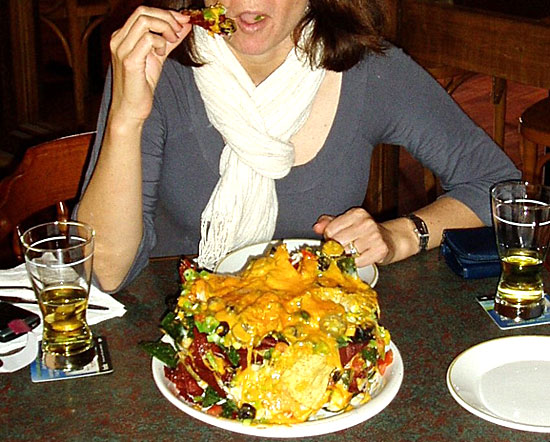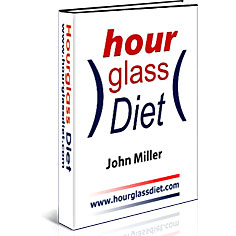
Most people don’t eat enough; of the right food at the right time.
Jean Nidetch
Founder of Weight Watchers
| TOO MUCH | TOO LITTLE | ||||
| Toxic Environment | Pathogens | Eat too much of | Do too much of | Do too little of | Eat too little of |
| Petrol fumes Herbicides Pesticides Fungicides Colourings Flavourings Preservatives Drugs Chemical degreasers | Viruses Fungi | Foods which are toxic and to which we are allergic. High energy junk food. | Sit on our backsides | Vigorous physical activity | Food containing essential nutrients |
What are you eating too little of?
Probably vegetables and fruit and the essential nutrients that come with them. There are also exotic fruits and vegetables which, if we bothered to eat them, would inject into our diet a whole host of ‘octane boosting’ nutrients – like these so-called super foods:
- Chlorella – the world’s greatest healthy aging food.
- Moringa – The ‘miracle tree’ of cell rejuvenation and the enemy of abnormal cell growth
- Goji Berry – the ‘longevity fruit’
- Spirulina – the most nutrient-dense food on the planet
- Cacao – the no. 1 longevity food
- Wheatgrass – the absolute best superfood for the rejuvenation of aging cells
- Camu-Camu – the super fruit with 600 times more vitamin C than oranges
- Acai – the most antioxidant-rich super food in the world.
I’ve copied the list (and the hyperbole that accompanies it) from an internet advert for nutrition pills containing super food extracts. I don’t know where you could purchase the real thing, but I can imagine that if you were a regular consumer you could be in such rude health that you’d be jumping out of your skin.
It’s probably the case that we eat a limited range of fruit and vegetables without any depth of understanding about how they enrich out diets.
We all know carrots are good for us, that oranges are a good source of vitamin C and that an apple a day keeps the doctor away. But what about potatoes? We seem to eat an inordinate amount of potato, thinking there’s something missing from off the plate if it’s not there. Is it there for its nutritional value or just to fill us up? I suspect the latter.
And what about offal? I don’t think anyone eats offal these days and yet offal is nutrient rich. Apparently wild animals go for the offal, having an innate understanding of its nutritional value.
Most people turn their nose up at lambs liver, kidneys, brains or tripe, and yet where I come from, 60 years ago they were popular fare. I imagine the offal that’s going begging goes the same way as lips and noses – into pet food. Imagine that, your dog is getting better fed that you are!
What are you eating too much of?
The garbohydrates ( yep that’s ‘G’ nor a ‘C’.), combinations of flour, sugar and fat, topped off with sweetened carbonated beverages and flavoured milk. Plus you can add the foods to which you are allergic and/or intolerant and the poisons.
The diet industry and the heart charities have out minds focused on the fat that comes with meat – as in eat too much fatty meat and you get fat.
But having said that, for every person who cuts fat off their chops, there are a dozen others who consume vast amounts of fat in the form of the hidden fats in junk food.
When making food choices, remember that fresh vegetables (with the exception of peas, pumpkin, potatoes and corn) have less than 120Kj/100gms.
Fruit, boosted by the sugar content, contains between 150/100gms and 500kj/100gms.
Meat, fish and chicken have around 1000kj/100gms.
Bread has about 1000Kj/100gms, but only on the rarest of occasions do people eat dry bread. They lather it with fat and sugar.
Breakfast biscuits, rice and pasta range from 1500/100gms to 1600Kj/100gms.
Sugar kicks in at 1700Kj/100gms.
Fat contains 3,700Kj/100gms.
The good old fashioned, common or garden, everyday digestive biscuit weights in at 1930Kj/100gms. You think the digestive biscuit you’re eating is good for you. Wrong.
A scotch finger biscuit contains 2100Kj/100gms, the Tim Tam, 2160Kj/100gms and the Ritz cracker, 2,370Kj/100gms. That is a huge energy dosage. It’s not what you’d prescribe for your average over weight, unfit person.
What are you doing too little of? Vigorous aerobic physical activity.
What are you doing too much of?
Sitting down
To learn more about the law of too much and too little and how you can eat to nourish the cells of your body and maintain an ideal weight go to the Hourglass Diet website by clicking on the book cover below.

